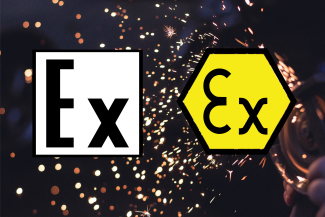
On November 16, 2021 the public discussion of the changes with regard to TR CU 004/2011 “On safety of low-voltage equipment” and TR CU 020/2011 “On electromagnetic compatibility” began. The Technical Regulation set minimum requirements for the safety of products during the EAC Certification, EAC Declaration or state registration.
Update of the terminology of TR CU 004/2011 and TR CU 020/2011
In the paragraph 2 “Definitions”, the existing list of terms will be updated: a new term “standard sample” is added and the terms “manufacturer”, “importer” and “authorized representative” are excluded.
Compliance with the standards of TR CU 004/2011 and TR CU 020/2011
In the changes, requirements for ensuring compliance with the standards of the technical regulations TR CU 004/2011 and TR CU 020/2011 will be specified. For the first time, test reports and certificates issued as part of international certification systems can be used as evidence. This concerns the conformity assessment of equipment used in the implementation of infrastructure and investment projects, the reconstruction of existing and the construction of new industries.
Update of the EAC certification
One of the most important proposed changes is the introduction of the scheme 9C in the EAC certification. Before that, there were only schemes 1C, 3C and 4C. Scheme 9C applies to individual products that are intended to equip companies in the EAEU area.
In addition, an EAC certification of the equipment is required if the applicant's own evidence is missing or insufficient. This is now only specified for devices that are not manufactured in accordance with the requirements of the standards from the list of technical regulations.
The EAC certification process is described in more detail depending on the scheme chosen. For example, it is clearly stated that in the case of EAC certification according to scheme 1C, the certification body must evaluate the certified equipment during the period of validity of the certificate every 18 months. The evaluation is carried out by testing of samples in an accredited test laboratory and/or in the form of an analysis of the production. It is also pointed out that devices for which the EAC certificate is issued for a period of less than 18 months must not be regularly assessed. If the results of the production evaluation are negative, the certification body is entitled to suspend or revoke the EAC certificate. A corresponding entry is made in the uniform register of certificates of conformity.
The changes contain a separate paragraph, provisions that define applicants for EAC certification. This is a legal person or a sole proprietorship registered in the EAEU:
- Manufacturer / person authorized by the manufacturer (authorized representative) for series production of the device
- Manufacturer / person authorized by the manufacturer (authorized representative), seller / importer for batches or single delivery
Update of the EAC declaration
The EAC declaration schemes remain unchanged: schemes 1D, 2D, 3D, 4D or 6D are used for the EAC declaration.
In the changes, the procedure for registering EAC declarations for devices on the basis of the chosen scheme is specified in more detail. For example, cases have been identified where testing of samples is not required. This relates to the use of documents that have been issued within the framework of international certification systems. In addition, it applies to schemes 2D or 4D if the applicant wants to carry out batches or individual deliveries for production for which an EAC declaration has already been registered. In this case, previous test reports are used for the EAC declaration. It is important that no more than 2 years have passed from the date of the test reports and that the technical requirements for performing the tests have not changed.
Changes to TR CU 004/2011 and TR CU 020/2011 come into force
The new version of TR CU 004/2011 and TR CU 020/2011 comes into force 180 calendar days from the date of the official publication of the resolutions. The public discussion is expected to end on January 30, 2022.




